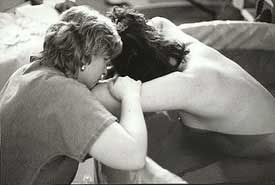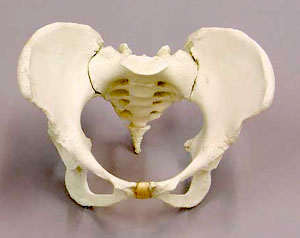
When making a decision of where to have your baby there are a score of questions to consider:
1. Measure of Risk vs. Control.
2. Pain Management vs. Natural Coping Tools (How do you personally view medicine: do you trust or mistrust the medical model medicine or would prefer the alternative coping tools?)
3. Baby-Centered ASPECT: considering what’s important:
a. Separation of the baby at birth.
b. Potential Medications going into your Baby. (These could be allopathic or alternative medicines.)
4. Where do you feel SAFE / SUPPORTED? Most important question to ask yourself.
5. What are your greatest FEARS with birth?
6. Why are you choosing the place to have your baby?
7. Have you ever SEEN a birth? TV, internet, film, live?
8. What was YOUR BIRTH like? What about your siblings? Grandmothers?
9. Were you breastfed? How long?
10. What is an image of an IDEAL BIRTH?
11. AUTHORITY, what does that mean to you? You may need to let someone else make decisions for you and your baby. If this is your preference, labor doulas/assistants, will give you information regarding personal choices and you will either assume that power or give the power away be it to a medical caregiver, doula, childbirth educator, sister, friend, or a mother.
Homebirth and Hospital environments are at one end of the spectrum and a Birth Center is a happy medium whether it is located in hospital or free standing out of hospital.
____________________________________________________________________
When I interviewed a mother of two, planning a Home Birth, the following were MOST important to her:
1. EMPOWERMENT: Feeling like she had some sort of say/power/control/connection  with what was happening during her pregnancy, labor and birth. Surrounding herself with a TEAM of women to support HER NEEDS, not their agenda’s.
with what was happening during her pregnancy, labor and birth. Surrounding herself with a TEAM of women to support HER NEEDS, not their agenda’s.
2. READING: two favorite books:
a. Nurturing Your Unborn Child, By Thomas Verny, Pam Weintraub
b. Continuum Concept, Jean Liedloff
3. MEDICAL PERSON: Visits with the MIDWIFE, even though the midwife was not warm and fuzzy, she was supportive to the mother’s wishes and did not ‘yes’ her at the prenatals.
a. She had a NUTRITIONIST on staff who had the mother write down one week’s diet. The nutritionist went over it with her to make sure she was getting all the appropriate nutrients included in her diet.
This mother, who’d not eaten yogur,t was told by a friend, “EAT YOGURT…you need yogurt.” The midwife asked her if she even liked yogurt and the mother said NO…so the suggestion was to bone up on other protein and calcium foods she DID eat and like. She didn’t do something because someone told her to do it.
4. DOULA: Having another set of hands, a friend, a doula, someone who could communicate with her without even speaking…knowing exactly where to massage, or bring her something to drink or eat was invaluable! Chemistry was very important!!.
(THE PARENTS MAY BE INTERVIEWING THE DOULA and THE DOULA IS INTERVIEWING THE PARENTS.)
____________________________________________________________________
When I interviewed a mother of three, pregnant with her fourth child, planning on a Hospital Birth, the following were MOST important to her:
 1. EXERCISE: Helped labor go more smoothly, body felt more toned, strong during pregnancy and labor. Recovery was faster, more in touch with her body, and found exercising everyday was really important.
1. EXERCISE: Helped labor go more smoothly, body felt more toned, strong during pregnancy and labor. Recovery was faster, more in touch with her body, and found exercising everyday was really important.
a. With one baby, she exercised more often than with the others. As a result of this, she feels her baby girl is much stronger in her body than her other children because of that.
2. MASSAGE:Towards the end of the pregnancy and even earlier stages she was having regular massage. (once a week.) It helps to release the pain in her body, the back, etc. and helped her to feel more comfortable, particularly in the last few months. It was a time for bonding with her baby and her doula. It’s important the doula bond with the baby as well.
3. DOULA: Incredible, ultimate support to have someone there with the knowledge, experience and insights as to what might happen next, or what to do when things were happening. Doula’s know what to ask and how to make her more comfortable.
4. READING: 10 books at my bedside…can’t really remember…all.
a. Week to Week book on Development: her favorite:
b. Pregnancy Week-by-Week[Spiral-Bound]Jane McDougall
c. Was reading some book on a special breathing technique from Switzerland…never really helped me…second birth pushing stage was really important what she did that time..blow instead of push hard!!.
5. OBSTETRICIAN:She chose an OB instead of a midwife. The bad thing about it was it was a group practice instead of a private practice and it was random who she would get for the birth. She felt they were all good doctors, but didn’t like the randomness.
6. HOSPITAL SETTING: She had expectations of what it would be like. Checking in was annoying, but she dealt with that. She was pleased with the nurses and staff overall and felt most safe to have her babies there.
____________________________________________________________________
When I interviewed a mother with her first pregnancy, planning on a Birth Center, the following were MOST important to her:
1. CONVENIENT FOR INSURANCE: because they decided not to have a home birth,  this was the best of both worlds.
this was the best of both worlds.
2. CHOICE REASON: The husband was not comfortable to do the home birth, perfect balance in his mind. RISK FREE: to him meant being IN a birth center, close to the facilities that could help out, “just in case”.
There was no luxuriating in the Birth Center. They wanted her out within 12 hours postpartum. She wanted to be out because the nurses were mad at her she wouldn’t get out of the tub when she was pushing so in turn, they were less gentle with her baby.
3. DOULA: was key to her birth because her doula was a ‘water specialist.’ This was the most important factor for her…more than her medical caregiver who knew nothing about water birth. Her 1st birth was on the obstetrical floor and the 1st underwater birth at that hospital. Her 2nd child, was at the same hospital in the birth center this time, underwater.
4. PREPARATION FOR BIRTHS: Because of the desire to have a waterbirth this mother read a number of waterbirth books, articles and watched one video out at that time. This was 1993 & 1996. The father’s comments were, “laboring and birthing in water is more like making love.” The childbirth education was mandatory for them to be in the birth center but they did not find it particularly valuable.
5. BIRTH PLAN: The obstetrician suggested and encouraged the mother to have a BIRTH PLAN and to hang it in the birth room on the wall so the nurses and other staff people could see her wishes. The DOULA also supported the idea. It was more important in the preparation of doing it because it helped her be clear about what she wanted and not wanted.
6. BEFORE PG – COLONICS: With the first pregnancy, she did a lot of them in order to get ready for the pregnancy which helped her feel more balanced and clean. At 36 years old, she conceived her child on the first try. With the second child almost 3 years later, she didn’t do any colonics and it took 3 months to conceive.
____________________________________________________________________
When I interviewed a father of three, pregnant with their fourth child, planning on a Hospital Birth, the following were MOST important to him:
 WHY CHOSE A HOSPITAL BIRTH: He didn’t really draw a line with their decision to go to a hospital as a major decision. He realize he’d never been at a home birth and had nothing to compareit to other than, several couples he know who’d completely gone the other way and had no doctors visits with the following results:
WHY CHOSE A HOSPITAL BIRTH: He didn’t really draw a line with their decision to go to a hospital as a major decision. He realize he’d never been at a home birth and had nothing to compareit to other than, several couples he know who’d completely gone the other way and had no doctors visits with the following results:
1. delivered a stillborn at home with a midwife,
2. child almost died because the cord was tangled around its neck,
3. delivered at 27 weeks, had a C section and the baby is still in the NICU (had she not gotten there asap, it would have been disastrous).
For him,understanding the protocol in the hospital was essential notbecause he had to obey it, but because being in the hospital environment offered him options in case something went wrong. Options that might not be available quick enough when doing a home birth. Although these kinds of complications are a small possibility in childbirth, his understanding is there is little time after a complication occurs to make decisions.
2. DOULA: -Was helpful as being well educated and conveying, not everything he hospital requires HAS to be done when the hospital wants it done.
3. WIFE CARE: It was very important to this father to make sure his partner is able to feel calm and she was in good hands to focus on her “delivery.” This was achieved by the combination of having the right food, water, doctor and level of support from everyone in a relaxed manner.
4. COMMUNICATIONS WITH Obstetrician: His prior experiences with an obstetrician in a hospital was the understanding there might be times in the process when the parents are questioned. If that happens not to take it personally. This was a tough one because the parents have to haveenough self-confidence to stay centered in that situation.
5. SUMMARY: He thinks the most important thing is to understand that being well prepared requires good education, That’s where I think a doula or birth assistant invaluable!
____________________________________________________________________
From MY perspective, the MOST important key elements at any birth:
BREATH / BODY / BABY

1. Stay connected to your BREATH, which is your heart coherence center.
2. Stay present by being IN your BODY as opposed to leaving or numbing your body.
3. Always keep the lines of communication and connection open with your BABY.
TRUTH AS I KNOW IT:
As a birth caregiver, I can get the word out there but ultimately, it is up to the mother and baby to integrate, assimilate and implement the information or suggestions to the best of their ability. There are no failures, there is only experience and from that experience is the potential for learning, growth and finding peace with whatever unfolds.







 ~
~ When one takes rolaids, it is COUNTER PRODUCTIVE to the absorption of the iron in the body. Rolaids is an ANTACID, (not acidic) and you NEED acid to absorb the iron in your body. So, you are just canceling out the iron supplement each time a rolaid is taken. It doesn’t matter if one takes one or ten…IT IS NOT GOOD! Research shows if a pregnant woman has to choose between chalk and rolaids, the more favorable choice is the chalk. It doesn’t have the antacid element to it. STOP rolaids immediately if your doctor has suggested this as a solution away from the chalk.
When one takes rolaids, it is COUNTER PRODUCTIVE to the absorption of the iron in the body. Rolaids is an ANTACID, (not acidic) and you NEED acid to absorb the iron in your body. So, you are just canceling out the iron supplement each time a rolaid is taken. It doesn’t matter if one takes one or ten…IT IS NOT GOOD! Research shows if a pregnant woman has to choose between chalk and rolaids, the more favorable choice is the chalk. It doesn’t have the antacid element to it. STOP rolaids immediately if your doctor has suggested this as a solution away from the chalk. Floradix is a liquid formula that will help to enhance the iron absorbtion in one’s body when eating iron rich foods.
Floradix is a liquid formula that will help to enhance the iron absorbtion in one’s body when eating iron rich foods. 1. Ferrous Phosphate: 6X or 12X strength, take 1-4 times per day, 4 pellets. This very useful cell salt is known as the “oxygen carrier”. It has the ability to carry oxygen to all the cells of the body for use in conversion to energy.
1. Ferrous Phosphate: 6X or 12X strength, take 1-4 times per day, 4 pellets. This very useful cell salt is known as the “oxygen carrier”. It has the ability to carry oxygen to all the cells of the body for use in conversion to energy. The 12 Tissue/Cell Salt Combination As the name implies, this is a combination of all 12 salts in a single tablet. This combination can be used daily in much the same way as you would take a vitamin or supplement. To treat specific conditions, however, select one of the single salts listed above. RECOMMENDED POTENCY – 6X is the most widely used potency. These are all the different MINERALS combined into the 12 Tissue/Cell Salts.Calcarea Fluoricum Calcarea Phosphoricum Calcarea Sulphuricum Ferrum Phosphoricum Kali Muriaticum Kali Phosphoricum Kali Sulphuricum Magnesia Phosphoricum Natrum Muriaticum Natrum Phosphoricum Natrum Sulphuricum Silicea (Silica)
The 12 Tissue/Cell Salt Combination As the name implies, this is a combination of all 12 salts in a single tablet. This combination can be used daily in much the same way as you would take a vitamin or supplement. To treat specific conditions, however, select one of the single salts listed above. RECOMMENDED POTENCY – 6X is the most widely used potency. These are all the different MINERALS combined into the 12 Tissue/Cell Salts.Calcarea Fluoricum Calcarea Phosphoricum Calcarea Sulphuricum Ferrum Phosphoricum Kali Muriaticum Kali Phosphoricum Kali Sulphuricum Magnesia Phosphoricum Natrum Muriaticum Natrum Phosphoricum Natrum Sulphuricum Silicea (Silica) Spinach is a source of non-heme iron, which is usually found in vegetable sources. Unlike heme iron found in animal products, non-heme iron is not as bioavailable to the body.
Spinach is a source of non-heme iron, which is usually found in vegetable sources. Unlike heme iron found in animal products, non-heme iron is not as bioavailable to the body.

 ~
~ Of course, I am in favour of the abolition of electronic fetal monitoring but it would be far more uplifting if this was being done for some sort of health improvement and not just more ways to cover butt in court.
Of course, I am in favour of the abolition of electronic fetal monitoring but it would be far more uplifting if this was being done for some sort of health improvement and not just more ways to cover butt in court. One of the midwife “tricks” that we were taught was to ask the mother’s shoe size. If the mother wore size five or more shoes, the theory went that her pelvis would be ample. Well, 98 percent of women take over size five shoes so this was a good theory that gave me confidence in women’s bodies for a number of years. Then I had a client who came to me at eight months pregnant seeking a home waterbirth. She had, up till that time, been under the care of a hospital nurse-midwifery practise. She was Greek and loved doing gymnastics. Her eighteen-year-old body glowed with good health, and I felt lucky to have her in my practise until I asked the shoe size question. She took size two shoes. She had to buy her shoes in Chinatown to get them small enough—oh dear. I thought briefly of refreshing my rusting pelvimetry skills, but then I reconsidered. I would not lay this small pelvis trip on her. I would be vigilant at her birth and act if the birth seemed obstructed in an unusual way, but I would not make it a self-fulfilling prophecy. She gave birth to a seven-pound girl and only pushed about twelve times. She gave birth in a water tub sitting on the lap of her young lover and the scene reminded me of “Blue Lagoon” with Brooke Shields—it was so sexy. So that pelvis ended the shoe size theory forever.
One of the midwife “tricks” that we were taught was to ask the mother’s shoe size. If the mother wore size five or more shoes, the theory went that her pelvis would be ample. Well, 98 percent of women take over size five shoes so this was a good theory that gave me confidence in women’s bodies for a number of years. Then I had a client who came to me at eight months pregnant seeking a home waterbirth. She had, up till that time, been under the care of a hospital nurse-midwifery practise. She was Greek and loved doing gymnastics. Her eighteen-year-old body glowed with good health, and I felt lucky to have her in my practise until I asked the shoe size question. She took size two shoes. She had to buy her shoes in Chinatown to get them small enough—oh dear. I thought briefly of refreshing my rusting pelvimetry skills, but then I reconsidered. I would not lay this small pelvis trip on her. I would be vigilant at her birth and act if the birth seemed obstructed in an unusual way, but I would not make it a self-fulfilling prophecy. She gave birth to a seven-pound girl and only pushed about twelve times. She gave birth in a water tub sitting on the lap of her young lover and the scene reminded me of “Blue Lagoon” with Brooke Shields—it was so sexy. So that pelvis ended the shoe size theory forever.
























